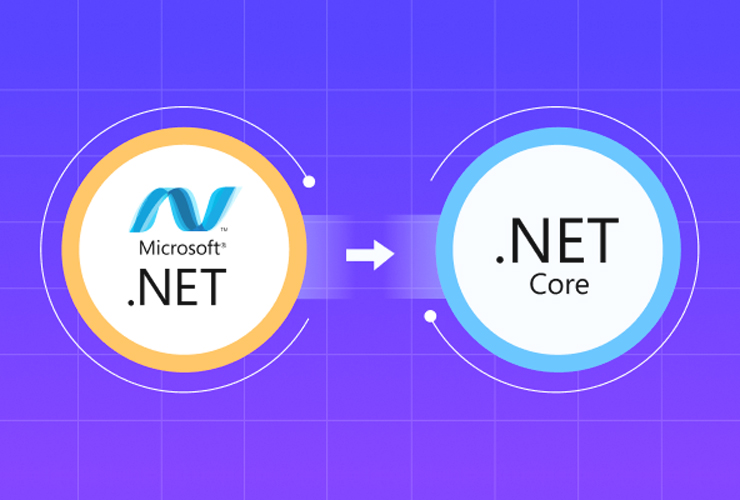In the current digital economy, applications must be designed in a manner that they can accommodate rapid growth in users, data, and transactions without sacrificing performance. Scalability is the ability of software to grow without degrading the user experience in response to growing usage. .NET Core with C# is a great option for scalable high-performance enterprise applications due to its modern architectural style, support for multiple platforms, community of open-source software, and rich runtime.
This blog post discusses the strategies and methods, advantages, and some best practices to follow to build scalable applications with .NET Core and C# to help organizations prepare for uncertainty and future growth.
Why Scale is Important
- User Growth – Applications should not only support thousands of users but millions of concurrent users.
- Business Continuity – High levels of scale can reduce downtime and support consistent performance.
- Cost – Scale up or down based upon your demand to lower overall infrastructure costs.
- Competitive Advantage – A scalable system will allow you to innovate faster, adapt to market changing faster.
- Customer Experience – Performance bottlenecks can lead to customer churn, a well-designed scalable application will support a smooth customer journey.
How .NET Core and C# support Scalability
1. Cross-Platform and Cloud-Native
.NET Core works on Windows, Linux, and Mac, enabling it to be used in cloud-native settings, including Microsoft Azure, AWS, and Google Cloud. This means applications can be horizontally scaled across a range of infrastructures with little or no re-engineering.
2. Microservices Architecture
C# combined with ASP.NET Core makes it easy to build microservices-based applications, enabling modules such as payments, authentication, search, or analytics to scale independently. This decoupling of work improves agility and fault tolerance, since one microservice not working does not mean the complete system is down.
3. High Performance with Asynchronous Programming
C# allows for asynchronous programming with async/await, Parallel LINQ (PLINQ), and the Task Parallel Library (TPL). These features improve the application’s ability to handle more requests concurrently, enabling the application to respond quickly even with the application under heavy load.
4. Docker and Kubernetes
Any application that is built with .NET Core can work seamlessly inside Docker containers. Additionally, orchestration using Kubernetes enables organizations to take advantage of auto-scaling, rolling updates, self-healing workloads, and intelligent load balancing features, allowing applications to scale on-demand.
5. Advanced Caching and Data Handling
To reduce the pressure on the database, developers can use distributed caching solutions (i.e. Redis or NCache) and exploit optimization techniques with Entity Framework Core that will allow queries to complete more quickly.
6. Security and Compliance
Enterprise applications must scale without compromising security. ASP.NET Core Identity, JWT (JSON Web Tokens), OAuth, and OpenID Connect ensure secure authentication and authorization. Built-in data protection APIs and role-based access controls make it easier to maintain security at scale.
Key Strategies for Developing Scalable Apps in .NET Core
- Design for Horizontal Scaling – Design your application to distribute tasks across multiple hosts or containers, rather than only considering vertical scaling.
- Take Advantage of Dependency Injection (DI) – Use the built-in DI framework from .NET Core, for less coupled, easier to maintain, and testable code.
- Utilize Load Balancing – Use a reverse proxy (such as NGINX, HAProxy or Azure Front Door) to balance the overall inbound requests.
- Optimize Access to Databases – Use techniques like indexing, sharding, caching layers and read replicas to help with query spikes.
- Take Advantage of Cloud Native Services – Use Azure Service Bus, Event Grid, Functions and API Gateway to weave your applications together, and to manage workload.
- Use Monitoring & Observability – Use tools like Application Insights, Prometheus, Grafana, and ELK stack (ElasticSearch, Logstash, and Kibana) to monitor performance proactively and look for errors.
- Automated Testing & CI/CD – Integrate unit, integration, and load testing into DevOps pipelines to detect bottlenecks before deployment.
Enterprise Use Cases
- E-Commerce Platforms – Handle large spikes in demand during sales or holidays.
- Banking & Finance – Securely scaleable to allow for hundreds of millions of highly sensitive transactions in realtime, with fraud detection and current awareness.
- Healthcare – Manage data about patients, the digital health applications, and telehealth with compliance and very high uptime.
- Media & Entertainment – Stream video or audio, or to trillions of people watching a live event, without downtime or disconnections.
Future Directions in Scalable .NET Applications
- Serverless Computing – Shift workloads to Azure Functions and AWS Lambda for more affordable scalability.
- AI & Machine Learning Integration – Introduce intelligence to applications using ML.NET and AI APIs in the cloud.
- Event-Driven Architectures – Support millions of asynchronous events with Kafka, Azure Event Hubs, or RabbitMQ.
- Edge Computing – Scale workloads beyond cloud computing, running them close to devices for superior response times.
- Zero Trust Security Models – Scale with certainty through identity-first, policy-driven architectures.
Conclusion
Scalability is necessary to compete effectively. Organizations leveraging the benefits of .NET Core and C# can build cloud-ready and high-performing applications that scale along with demand. Enterprises can create efficient, reliable, and sustainable value in today’s competitive market by employing microservices, containerization, caching, cloud-native services, and architectures that will scale in the future.
Whether modernizing a legacy system or creating a new enterprise-grade platform, .NET Core with C# offers an ideal development platform for applications that not only scale but also grow and thrive.












